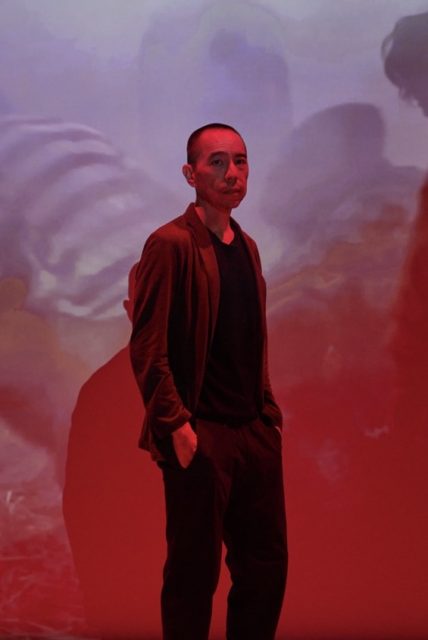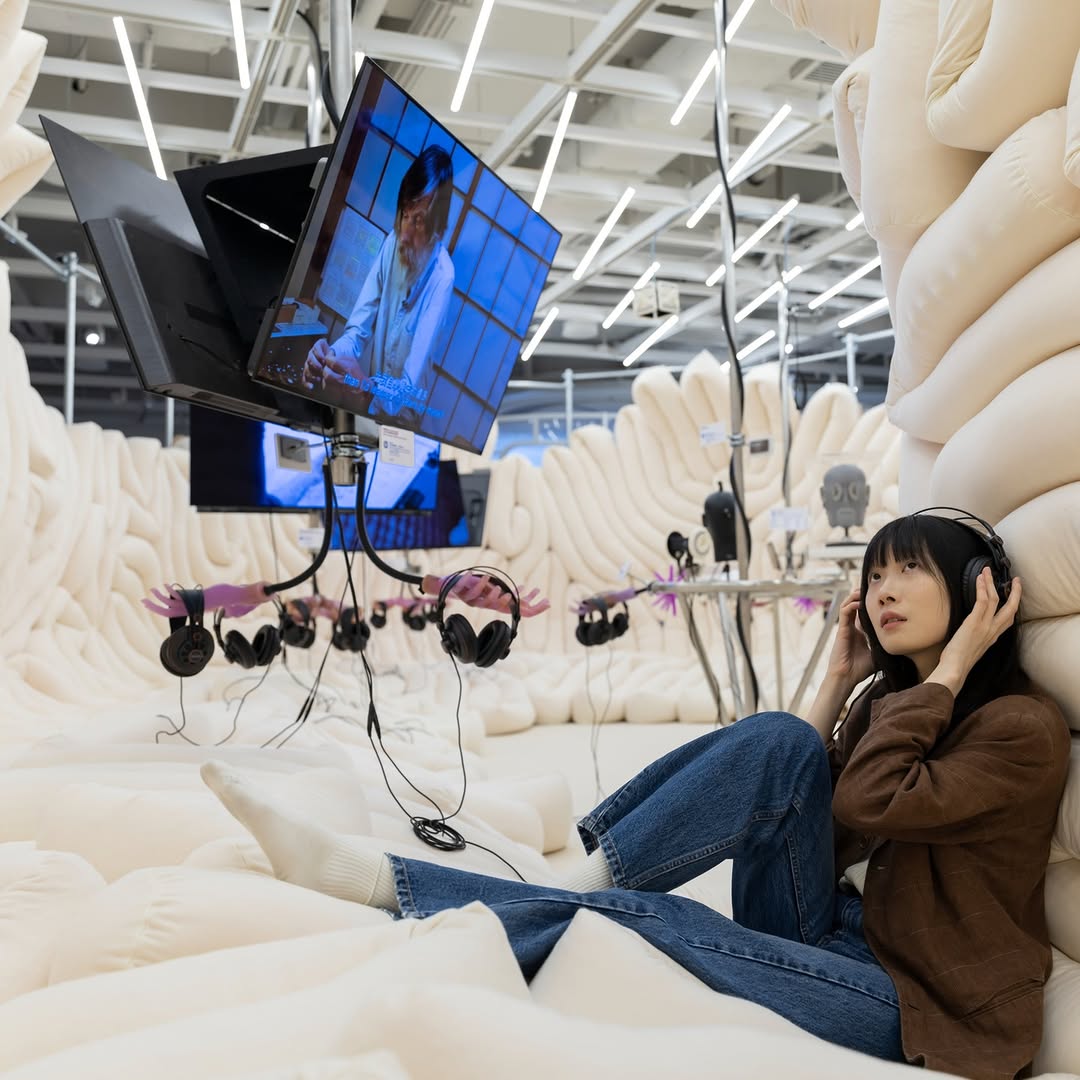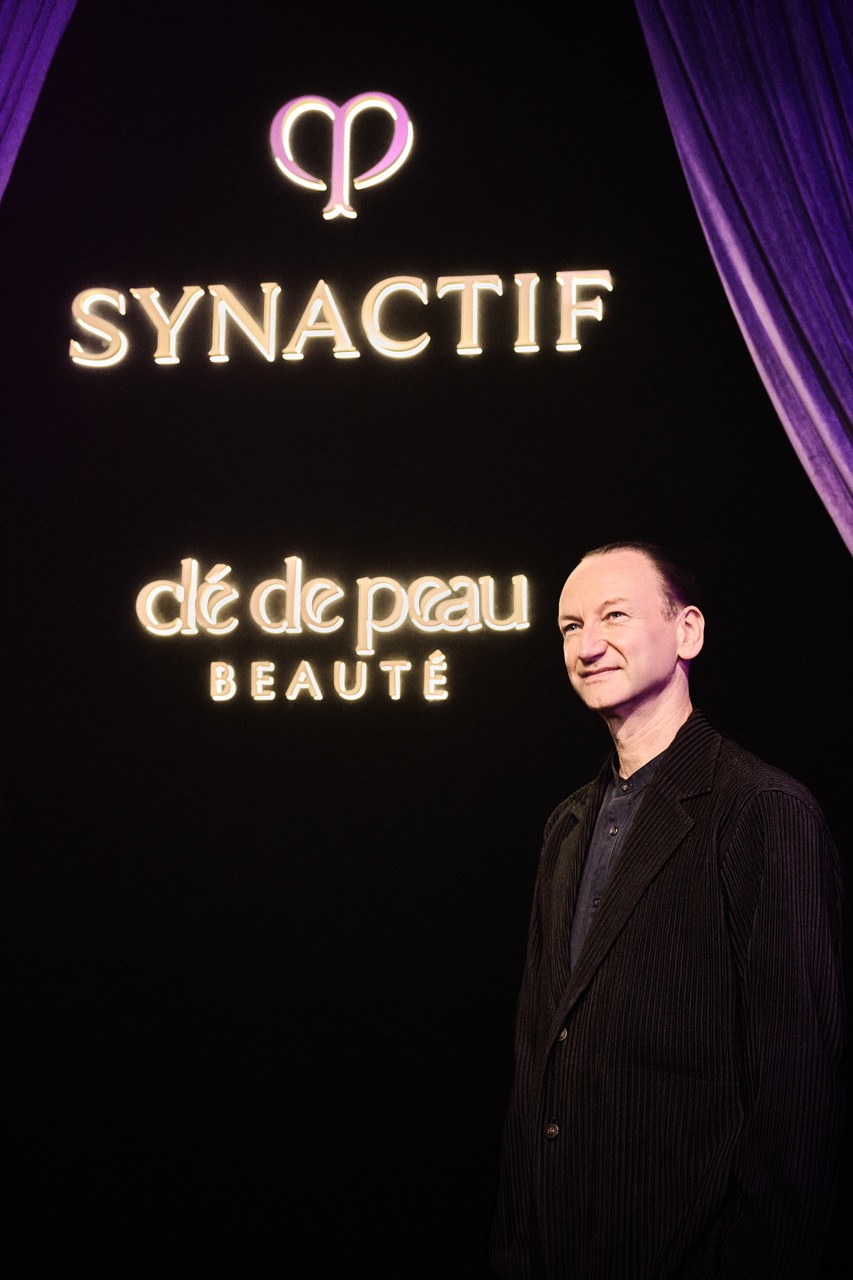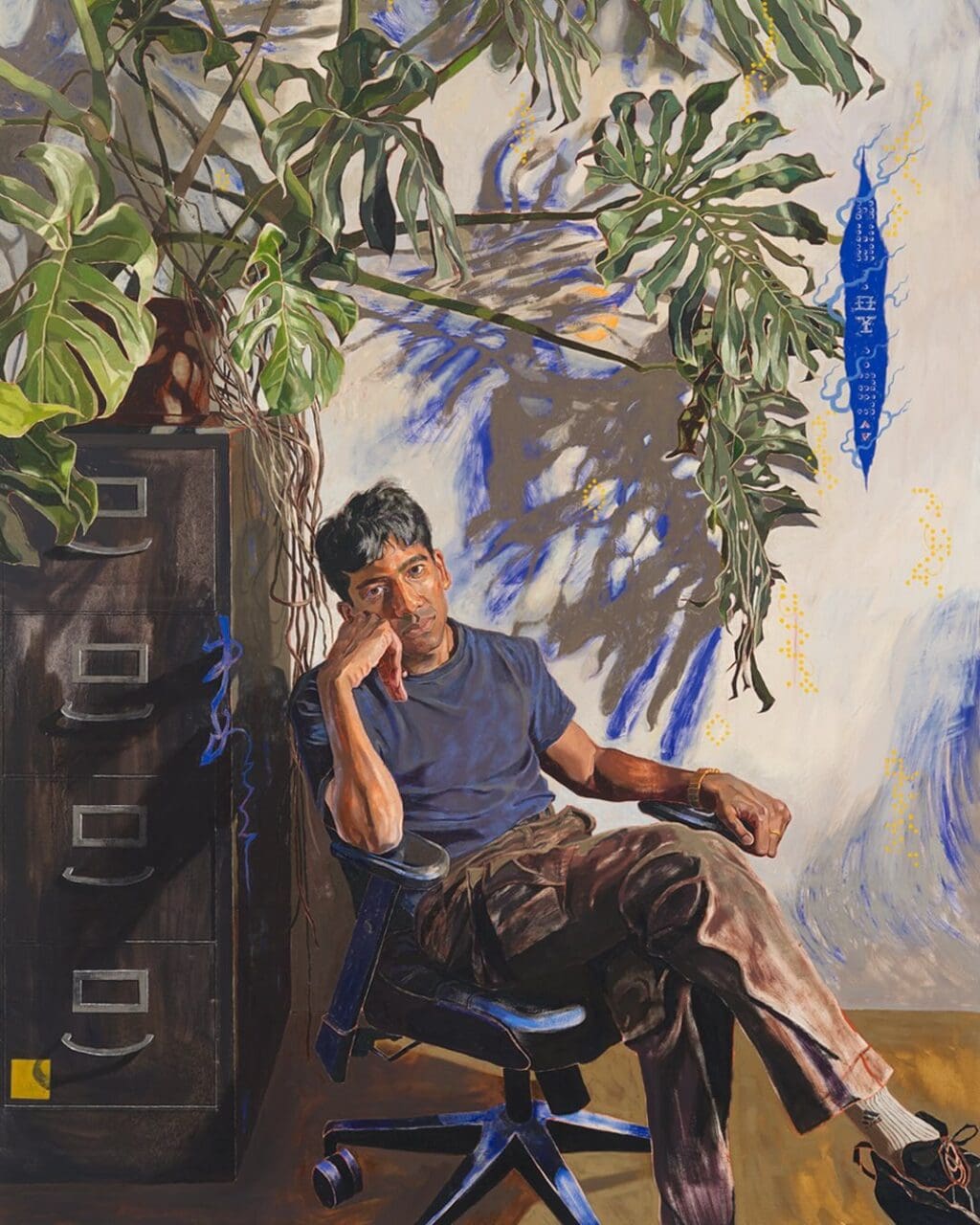A few days before I sat down with Myonghi Kang about her latest exhibition at Villepin, The Rebirth of Nature, Arthur de Villepin asked Kang a simple question. “When did you start painting abstract?” he asked, after someone asked him the same question. Kang responded straightforwardly: “I’ve never painted abstract,” she stated firmly without hesitation. “Maybe I don’t paint well enough for you, but I don’t paint abstract. I never have. My paintings are very concrete.”
Kang’s words underscore the clarity of her vision, both literally and figuratively. “Well, she just paints what she sees,” smiles Dominique de Villepin, who is also Kang’s old friend. “What’s very interesting in her way of looking at the world and looking at nature – whether it’s the Gobi Desert or just the garden next door – is the importance given to time. She will look at the same landscape at different moments of the day, then try to paint and capture the sum of all these different moments. When she’s painting, she’s not just capturing one angle, but all the memories she has of what she’s looking at,” he explains in depth. “In her painting, you can see a succession of her different visions, which makes it a truly complete vision: the sum of many moments, many perspectives, many emotions.” While some viewers may question whether elements of abstraction emerge from Kang’s expressive brushstrokes, for the artist and those at Villepin who have championed her career, her work has always represented the reality of the world she observes in all its beauty.
“In our minds, nature is grass and trees and flowers…but nature is everything. Nature is people, it’s a city, it’s history…Nature is a bridge to allow dialogue between all things,” Kang once mused. Now, this dialogue unfolds at Villepin, where her latest works depicting natural scenes from Hong Kong, Taipei and beyond are displayed in a specially renovated space inspired by Catalan architect Ricardo Bofill. “Bofill realises that the problem with our world is not nature, but how we look at it,” Arthur de Villepin explains. “He’s interested in how we are cutting ourselves from our environment and wonders how architecture can help us anchor ourselves in the present. His arches and stairs make you feel you have nothing to hang on to and eventually fall into a place where you become available to the world around you.”
Once you step inside Villepin, you fall into a vibrant world where Kang’s voice is ever-resonant, its echoes drifting through the gallery’s arched windows, a melodic refrain calling us to listen to nature’s rhythms. Each of her brushstrokes is a note in the song her soul sings of splendid scenes she sees and hopes – through her eyes – we, too, might one day see.
Can you tell us more about the inspiration behind Hong Kong, Stream 5 and the Hong Kong, Stream series?
Myonghi Kang: At 6am today [March 19], I woke up in my hotel room and painted the same spot you see in Hong Kong, Stream 5. Whenever I visit Hong Kong, I return to the same hotel and work from my room, where I can see Pok Fu Lam Village while looking out the window. I experimented and mixed traditional Chinese black ink with Western watercolour for the first time yesterday. I pondered over combining the two mediums for a long time. I looked at my painting today, and I questioned myself. Returning to the same spot every time and repainting it over and over again is an arduous study for me. Frankly, it makes me very tense because I still carry my habit of depicting the same spot, and I question my new ways of portraying it every time. I learn a lot from looking at the accumulation of my old work. It’s a good study for me.
Is there a particular work in The Rebirth of Nature that speaks most to you right now?
Myonghi Kang: I will choose Atelier (2024), one of my most recent paintings. It was even wet when it came to Hong Kong from Korea because it was so recent. I began with painting the floor, the reflection of the line on the floor and the reflection of the objects near the floor. Then you see the still life, the bamboo and dried flowers that are always there, and then I spread it out to the wall, on which my painting hangs. So, you can see how my mind shifted throughout the painting process. However, because I started with the floor, I didn’t think I got to the essence of it yet, at least not to the point that I was satisfied. So, I want to revisit those angles in the same spot. I was actually on halt for six months because I could not move forward on the floor.
What would you like the audience to take away from this exhibition?
Myonghi Kang: Even though my work initially extracts the essence of nature, at the end of the painting process, it stands as a painting and has nothing to do with nature. However, as a painting, each piece has its own identity and has also captured traces of human history in the sense that my work encapsulates everything that goes around in the world that I see and the life I live. It speaks to the audience not necessarily due to my intentions but because it is a painting.
You once said: “Man belongs to nature from the very beginning. I believe that man, nature, and the cosmos contribute as a single unit, even though technological advancements have diminished our awareness of nature.” How do you see art playing a role in reconnecting the human consciousness to nature?
Myonghi Kang: At my exhibition in Korea last year, I was listening to Mr. Dominique Villepin introduce my work. I never thought somebody could explain my paintings like he did — how you need to look at them through different lenses and angles. My paintings are not just plain surfaces, they have a lot of layers of perspective. I haven’t shared this with many people, but when people take pictures of my paintings, I tend not to agree with their fo, their photography angles, or just the photo itself. Honestly, I cannot take the photo seriously and look at it as if it is something real, but everyone in this world will call me crazy. (chuckles) From my own eyes, I paint. With the help of Dominique and Arthur, I developed a relationship with my audience through my paintings so that people could maybe see the world the way I see it, too. I cannot promise or foresee what people see when they look at my paintings because it’s already happened and will happen anyway. For that reason, I never painted to show my work to people or have an exhibition or sell it because I have to see nature and the world for what it is. It has to be real.
Editor
Kaitlyn LaiCredit
Lead Image: Courtesy of Villepin













